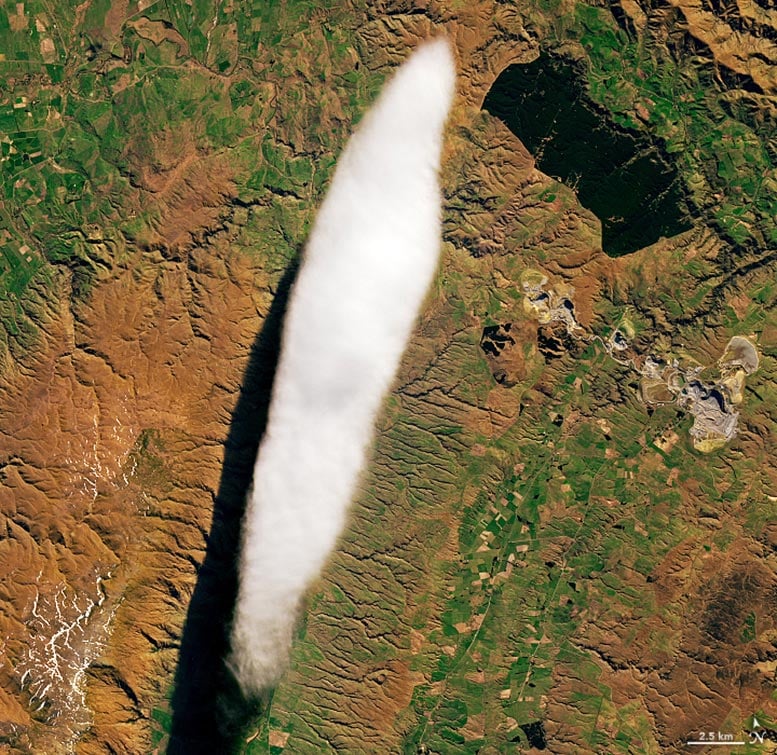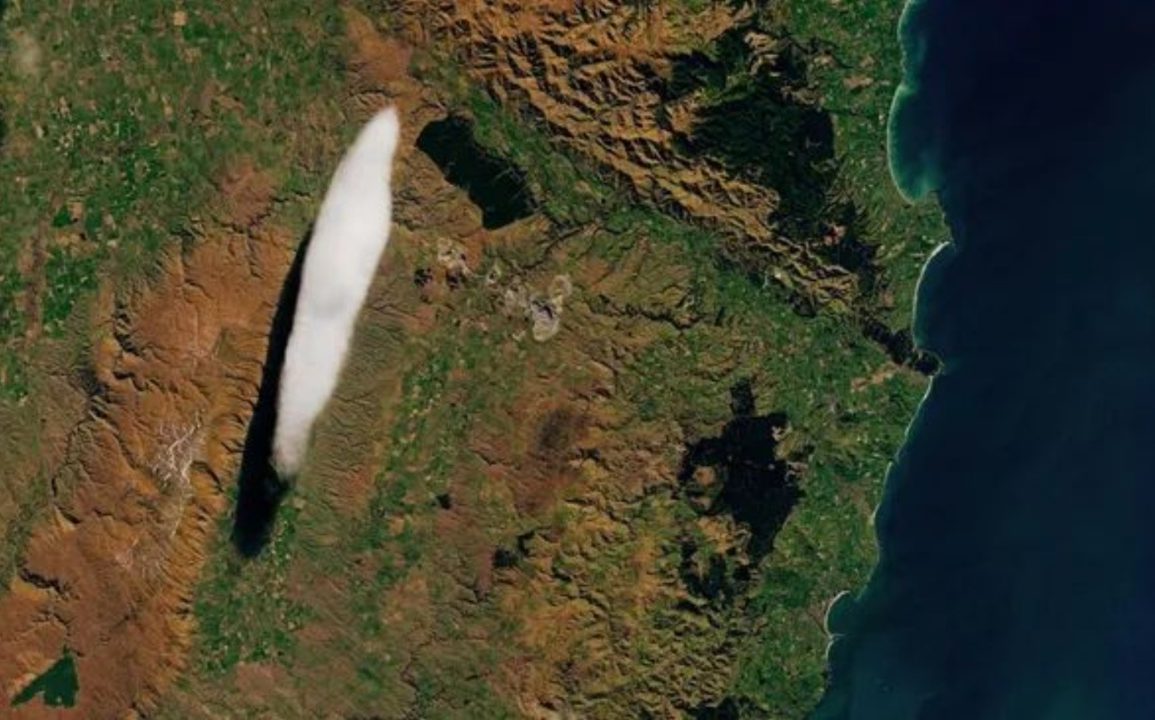A recent satellite photo of New Zealand captured an unusual cloud formation known as the “Taieri Pet,” which locals recognize as a standing lenticular cloud often seen in the Otago region between Middlemarch and Hyde.
This unique altocumulus standing lenticular cloud (ASLC) forms regularly in the same spot, appearing elongated and sometimes resembling a UFO, which has led to occasional confusion with unidentified flying objects. In this instance, the cloud measured about 7 miles (11.5 kilometers) in length, and its shape and position are consistent due to geographical and atmospheric conditions.
The formation of the Taieri Pet results from air currents passing over the nearby Rock and Pillar Range, a mountain chain that forces moist air upward, causing water vapor to condense into layers and form a cloud.
These layers are then sculpted by strong, perpendicular winds blowing from the north, according to NASA’s Earth Observatory. This creates a nearly stationary cloud in the sky that maintains its shape as air moves through it. John Law from New Zealand’s MetService explains that the wave effect over the mountain crest keeps the cloud in one spot, despite the strong winds involved.

Lenticular clouds like the Taieri Pet are often mistaken for flying saucers due to their saucer-like, layered shapes. According to the U.K. Met Office, they are a common cause of UFO sightings globally because of their striking resemblance to these iconic images of spacecraft.
When viewed from the side, the Taieri Pet appears as a “stack of pancakes” or “pile of plates,” with distinct horizontal layers that add to its surreal appearance. Historical photographs show that these clouds can reach impressive heights of several hundred feet.
Lenticular clouds pose potential risks to aviation because of the severe turbulence within them, caused by vertical currents running up and down. As aircraft pass through such clouds, pilots may encounter challenging flying conditions and even ice accumulation due to the cloud’s low temperatures, as noted by the U.K. Met Office. This turbulence and icing hazard underline why pilots are cautious around ASLC formations, especially those as prominent as the Taieri Pet.
While ASLCs can sometimes signal impending changes in weather, often bringing increased precipitation, this was not the case here, according to Fox Weather’s historical data analysis. Despite the ominous appearance and potential as an indicator of shifts in atmospheric conditions, the Taieri Pet did not predict any significant weather changes, showcasing the uniqueness and curiosity that such clouds can inspire without necessarily indicating stormy conditions ahead.

